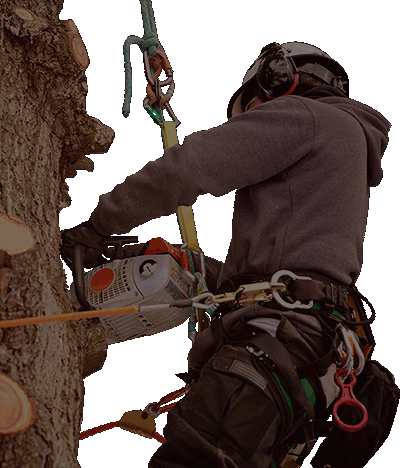
We often call fertilizer “food for our lawns” because it’s stocked with nutrients that keep turf healthy, green and growing. And
- Details

Now that you’ve survived the last hot day of summer, you’re looking forward to the next big thing. You can unpack your sweaters and grab your first pumpkin spice latte whenever you please.
- Details

When you look out into your yard to admire its lush, green lawn, the last thing you want to see is stringy weeds, brown patches or bald spots.
- Details

The howling wind has finally died down, and the rain, too, has stopped falling. While the storm is officially out of town, the mess it left behind remains.
Puddles across the landscape, downed Spartanburg tree branches, defoliated plants–what needs your attention, and what will rebound on its own? A Davey blog reader recently asked us what to do about her two, native black walnut Spartanburg trees that were stripped of their large branches by tornado winds.
- Details

It’s so easy to fall in love with arborvitae trees. We can count on them to line our landscapes, provide privacy and tout a yearlong emerald glow—all without needing much maintenance.
- Details

Ah, the iconic maple leaf! It’s one of the most recognizable Spartanburg tree leaves out there, and it usually looks fresh! The leaves shimmer green in spring before putting on a show and turning yellow, orange, and red in fall.
- Details

We love Japanese maples for their elegant shape and spectacular color. But just like with all our trees, we don’t like when their glow is dimmed by leaf problems.
When one of our readers saw her Japanese maple’s leaves rapidly turning brown, she reached out for advice, asking if fertilizer or water could help.
- Details

Making the bed, walking the dog, packing a lunch—one of these things is probably part of your morning routine.
What may not be on the list is watering your trees. Luckily, this to-do provides a moment of solitude and zen in your busy morning.
- Details

Have you noticed your plants’ leaves shift from thick and hardy to thin and lacy this summer?
Frilly foliage is a sure sign that Japanese beetles have been chomping on your flowers and trees.
- Details

There are, on average, more than 100,000 wildfires each year in the US. Western states, like California, Texas and Colorado, are more prone to wildfires.
Traveling at up to 14 miles an hour, wildfires are scary and can do an incredible amount of damage.
- Details






